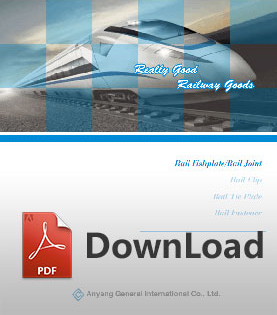Railway sleeper materials overview: wood, steel, concrete, plastic
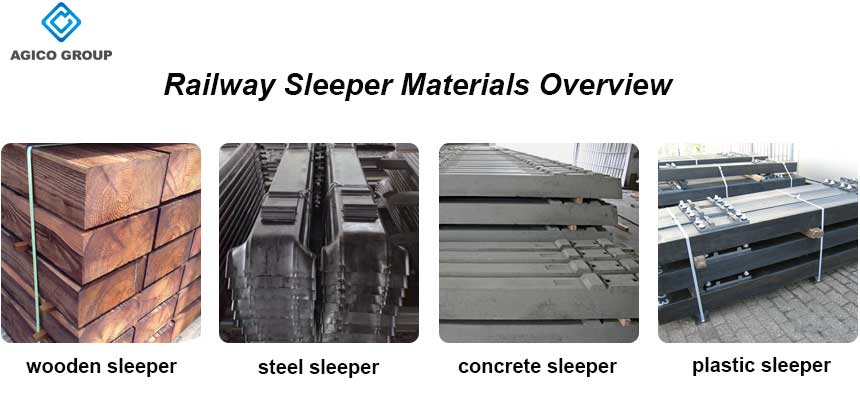
Railway sleeper is a part of railway track, which is usually laid between two rails to keep the correct position of steel rail. Railway sleeper is also known as railroad tie or crosstie. Rail sleeper is mainly used to transfer the locomotive load to railroad bed. Normally, railway sleepers can be classified into several types based on different materials. What railway sleeper is made of? Railroad sleeper can be made of wood, steel concrete and plastic, and so on. Different kinds of railway sleeper can be applied in different area, for example, wooden sleeper is mostly used in the US, while concrete sleeper hold the largest market in Europe and Asia. Every kind of railway sleeper has its own advantages and dis advantages.
Wooden railway sleeper
Wooden sleeper is a traditional type of railway sleeper. As of today, wooden sleeper still hold the largest share of railway sleeper market. Especially in the North America, wooden tie take 93% of railway sleepers. According to the types of wood, wooden sleeper can be divided into hardwood sleepers and softwood sleepers. To be specific, hardwood sleeper include oak railway sleepers, jarrah, karri sleeper, etc. Douglas fir is typical kind of softwood for making sleepers in railway.
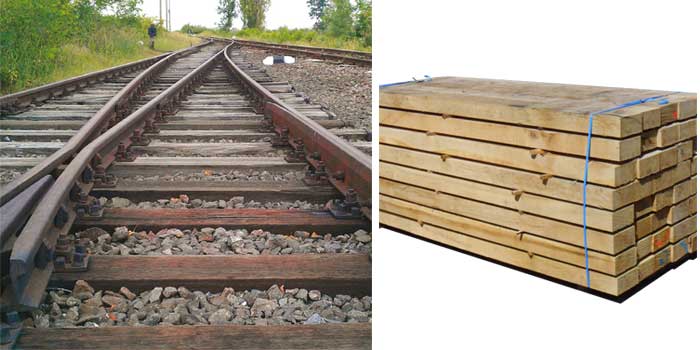
Advantages of wooden sleeper
- Wooden sleeper is so light that easy to transport, install and maintain.
- Wooden sleeper has large application in the railway track, it is suitable for any section.
- It has lower cost than other kinds of railway sleeper.
- Used railroad tie can be used for gardening or landscaping.
Disadvantage of wooden sleeper
- It is easy to be affected by humidity.
- It is hard to be recycled, which makes wooden sleeper more expensive.
- Service life of wooden sleeper is shorter.
Concrete sleeper
Concrete sleeper is mostly made from pre-stressed concrete. It is a technique introduces internal tension to the sleeper before casting, which reduces the damage from external pressure during service. In general, concrete sleeper is used in the high speed railway. Concrete can bear more loads, which provide high speed railway the possibility of higher speed. Concrete sleeper was first put in use in France, and it became common after World WarⅡ. At present, concrete sleeper is mainly applied in Asia, Europe and Australia. But, concrete tie has less market share in the US.
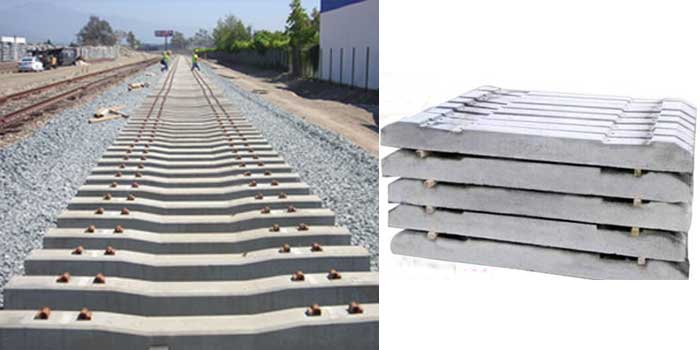
Advantages of concrete sleeper
- Longer use life compared to wooden sleeper (40-50 years).
- Great stability because of it is heavier than other types of rail sleeper.
- It is cost-effective in the long run.
- Concrete rail sleepers need less maintenance.
Disadvantages of concrete sleeper
- It is so heavy that it is difficult to be handled.
- It has limitation in application (cannot be applied in bridges and crossing).
Steel sleeper
Steel railway sleeper is formed from pressed steel and with a trough-shaped section. There is housing for rail fastening system is welded to the upper of steel sleeper. Because stronger than wood and cheaper than concrete, steel railway sleepers are usually make considered as middle way between wooden sleeper and concrete sleeper. It seems like that steel sleeper is a better choice, but steel railway is applied a few area like secondary lines in UK, far less than other types of rail sleeper. Facts proved that steel rail is more adoptable for some special rail section, for example, the Hejaz Railway in the Arabian Peninsula, steel sleepers provide a solution to the long-standing problem about local residents steal wooden sleeper for campfires.
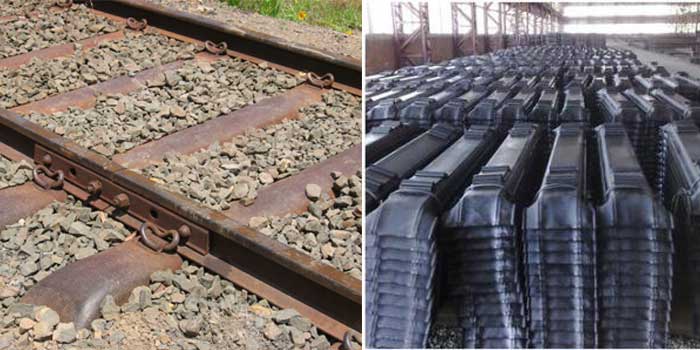
Advantages of steel sleeper
- Steel sleeper is easy to install at the existing ballast bed, which needs low cost.
- Steel sleeper is also easy to stack in due to it is light in weight and its shape.
- It has long service life (more than 50 years).
- Steel sleeper is recyclable.
Disadvantages of steel sleeper
- Chemical corrosion is a drawback of steel sleeper.
- Higher maintenance cost.
- For now, steel sleeper can only be used in some special area because of insulation problem.
Plastic railway sleeper
Plastic railway sleeper, also called composite sleeper, mainly refers to the railway sleeper is made of the plastic composite. Plastic composite is a total modern material for making rail sleepers. It is the mixtures of plastic and used or waste rubber. Plastic sleeper combines the pliability of wood and durability of concrete, at the same time, some shorts of other types are avoided. Plastic sleeper is firstly used in railroad by Japan, who is the leader in composite manufacturing. After that, plastic composite sleeper were installed on the tracks of the Zollamt Bridge in Vienna, Austria.
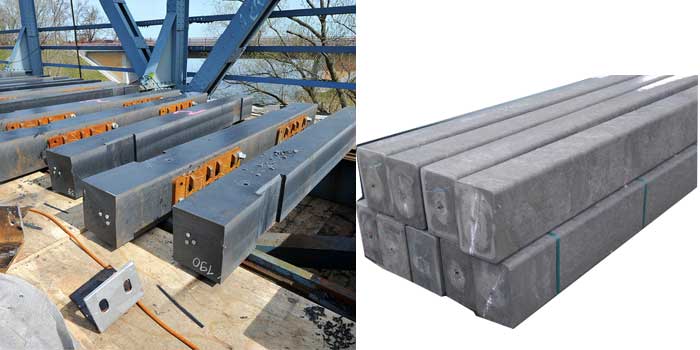
Advantages of plastic sleeper
- Plastic sleeper act better in reducing the vibration.
- Composite sleeper is cuttable and light, so that it can be installed easily and applied in any rail section like wooden sleepers.
- It is recyclable, which means used composite sleeper can be reused into new sleepers.
- Plastic sleeper has longer service life(about 30-80years).
- It is also a kind of environmentally friendly railway sleeper.
Disadvantages of plastic sleeper
Cost of plastic sleepers restricts the possibility of being applied in large scale.
In conclusion, wooden sleeper, concrete sleeper, steel sleeper and plastic sleeper are important for modern railway track. As a professional railway products manufacturer, AGICO Rail can provide different kinds of railway sleepers you need, such as UIC865 Series Steel Sleepers and BS-500 Series Steel Sleepers, and various hardwood sleepers, etc. custom-designed and fast shipping are available. Learn more about how to lay railway sleepers.
You may also like:
- Comparison Of Railway Sleepers
- How much do you know about railway sleepers?
- A Guide of Concrete sleeper
- What Is A Timber Sleeper?
- Where to Buy Railway Sleepers?
- How to build a raised bed with railway sleepers?
- Typical railway sleepers overview - wooden sleepers, hardwood sleepers and oak railway sleepers
- How to fasten railroad screw spikes to railway sleepers
- Rail sleeper
- Rail Fasteners
- rail fastening system
- rail clip
- railroad spike
- Track bolt
- rail shoulders
- rail anchor
- rail clamp
- tie plate
- Rail Pad
- rail insulator
- rail plastic dowel
- other rail fasteners
- Railway Switch
- SKL series rail fastening system
- Chinese standard rail fastening system
- screw spikes
- Crane rail fastening system
- K type rail clip for Africa
- Hey-Back Rail Fastening
- rail fasteners for Mexican market
- Ss25 screw spike
- Ss35 rail sleeper screw spike
- Ss8 screw spike
- coach screw
- Crane Rail Clip
- Rail Joints (Fishplate)
- Steel Rail
- Railway Sleeper
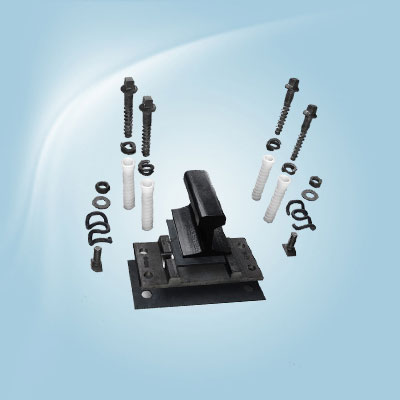 rail clip
rail clip
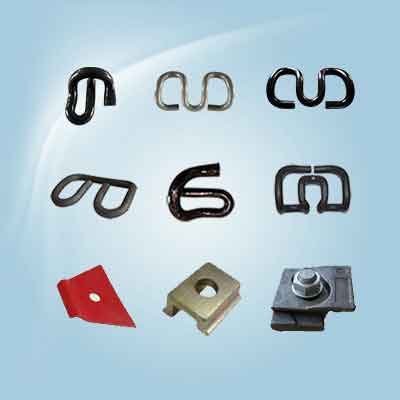 rail joints
rail joints
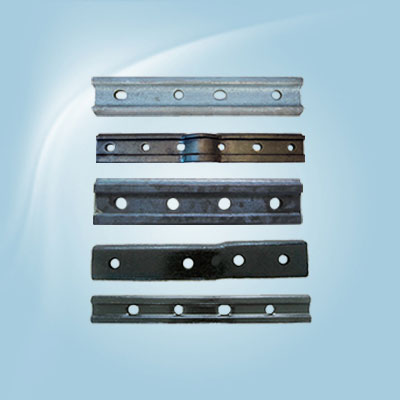
 Español
Español English
English
